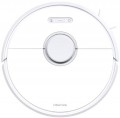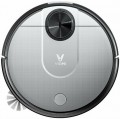Motor power
Rated power consumed by the vacuum cleaner. In models with power adjustment (see below), the maximum value is taken into account in this case. We are talking about the characteristics of the installed motor, which is the main, and in most vacuum cleaners, the only consumer of energy.
Higher power increases suction force and improves overall cleaning efficiency. In addition, a more powerful unit is easier to equip with a capacious dust collector. On the other hand, only vacuum cleaners of the same type with the same types of dust collectors can be directly compared by this parameter (see above for both). And even in such cases, the actual suction force (see below) may be different — and it is it that determines the real efficiency. However, the total power also allows you to generally evaluate the capabilities of the vacuum cleaner, including in comparison: a 1500 W model will significantly outperform its 800 W counterpart in efficiency (although it is impossible to say exactly by how much). But what definitely depends on this indicator is energy consumption.
As for specific power values, they are largely related to the type of device. For example, handheld models, robots and uproght units have low power —
less than 1500 W(and often noticeably less). Such values are quite popular among other types of vacuum cleaners (conventional, industrial, workshop, etc.), but among them there are already more solid indicators —
...f="/list/90/pr-1067/">1500 – 1750 W,
1750 – 2000 W and even
more than 2000 W.Suction force
The suction force provided by the vacuum cleaner. It is indicated by the maximum vacuum (negative pressure) that the unit can create at the working nozzle.
Note that this parameter is sometimes confused with the suction power described above, which is indicated in watts. Yes, suction force to some extent determines the efficiency of the unit. However, this efficiency also depends on the performance (airflow). And the suction power, indicated in watts, takes into account both of these parameters — it is determined by multiplying the suction force by the performance (see above for more details). For this reason, there is no strict relationship between this force and suction power: for example, a vacuum of 25,000 Pa can be found in models with 250 W, 200 W and even 150 W of power.
As for the practical significance of this spec, in general, a higher suction force allows you to work more efficiently with high resistance. For example, when processing carpets with a long pile. On the other hand, more pascals (with the same number of watts) means less airflow and, accordingly, less efficiency for large amounts of work at low resistance (for example, cleaning large rooms with parquet floors). Thus, it makes sense to pay attention to this indicator mainly in cases where high suction force is fundamental for you. In other cases, it is worth evaluating the capabilities of the vacuum cleaner in terms of suction power in watts.
Note that for a number of
...reasons, the suction power is most often specified for robot vacuum cleaners (see “Produc type”). For such models, a value of 1500 Pa and below is considered very small, 1500 – 2000 Pa — medium, 2000 – 2500 Pa — high, more than 2500 Pa — very high.
It is also worth mentioning that the indication of suction force is often used as a publicity trick — to improve the impression of the product. For example, the suction power of 150 watts in itself is quite modest. But at the same time, the suction force of such a vacuum cleaner can be 25,000 Pa — a very impressive figure, especially for an inexperienced buyer, but having a very indirect relation to real efficiency. Especially often, such tricks are used among upright models and the already mentioned robots — these varieties initially do not differ in high power in watts. For many of these units, the characteristics only indicate the vacuum in pascals without specifying the suction power. It further enhances the impression: for example, in the specs of a modest robot, the figure "3000 Pa" looks much more impressive than "40 W". However, such figures have a very weak relation to the real capabilities of the unit and if they are not supplemented by data on suction power in watts, they should be considered solely as bait for a not particularly sophisticated buyer.Dust collector capacity
The nominal volume of the dust collector installed in the vacuum cleaner.
This indicator largely depends on the type of unit (see above). For example, in most handheld household models, the capacity
does not exceed 0.5 L. The volume of the container in upright vacuum cleaners and robots can be somewhat larger — among the first variety there are quite a few models for
1 – 2 liters or even more, and among the second — by
0.6 – 1 liter and a little more. For conventional vacuum cleaners, the minimum figure is actually about 0.8 – 1 L; dust collectors for 1 – 2 L and
2 – 4 L are very popular in such devices; the maximum capacity is actually
4 – 6 liters — units of a similar layout, but with a larger capacity, are usually referred to as household ones. In turn, relatively small containers are occasionally found among workshop models. However, in vacuum cleaners of this type, the capacity is generally quite large — it can reach
26 – 50 liters or even
more ; the same applies to industrial (construction) units.
In general, a larger dust container allows you to work longer without interruptions. On the other hand, a capacious container itself takes up more space and, accordingly, affects the size, weight and price. So when choosing th
...is parameter, it is worth considering the actual features of the use of a vacuum cleaner. Here we can give such an example: for a full-scale cleaning of an average city apartment, a capacity of about 1 – 1.5 litres is required. Thus, say, a 4-litre bag allows you to carry out two such cleanings with sufficient efficiency without unloading the vacuum cleaner. There are more detailed recommendations regarding the optimal volume of the dust collector, including specific cleaning options. These recommendations can be found in special sources.Water tank capacity
A capacity of a tank for water or detergent a vacuum cleaner with a wet cleaning function is equipped with. (see "Cleaning type").
Large capacity allows you to work longer without refilling the tank. On the other hand, an increase in capacity has a corresponding effect on the size, weight and cost of the unit. Thus, manufacturers choose this parameter taking into account the general specialization and the “weight category” of a particular model. So, in robots (see "Type"), the volume of the water tank is, by definition, small. Even in the heaviest models, it does not exceed 650 mL. But other types of vacuum cleaners can differ markedly in this parameter.
In general, for non-robot units, a capacity
of 1 liter or less is considered very limited,
1 – 2 liters is small,
2 – 3 liters is average,
more than 3 liters is above average. However, it much depends on the type. For example, in conventional vacuum cleaners, the capacity does not exceed 2.5 liters, and "for workshop" models this is very little — in most cases, they have a tank capacity of 3 liters or more.
multi-map memory
Advanced models of robotic vacuum cleaners can have
multi-map memory. Thanks to this feature, when moving the robot to another floor, it does not need to reacquaint itself with the premises and build a new map. As a result, cleaning will be done faster and better.
Voice assistant
Types of
voice assistants supported by the robot vacuum cleaner.
As the name implies, this function allows you to control the robot using voice commands. However, we emphasize that in this case, we are not talking about the voice recognition system built into the vacuum cleaner but about compatibility with an external device on which the corresponding voice assistant is installed — a smartphone, tablet, smart speaker, etc. Thus, to use voice control, an additional device will inevitably be required; on the other hand, there are no problems with the search for such a device nowadays. And in itself, such a control method often turns out to be more convenient than a command from the remote control or searching for the desired option in the control application.
As for specific assistants, the most popular nowadays are (in alphabetical order) Amazon Alexa, Apple Siri, Google Assistant. And in robot vacuum cleaners, compatibility can be provided both with one of them and with several at once. The specific control functionality available through the voice assistant should be specified separately for each model. It is also worth paying attention to the supported languages: for Siri, the language must be selected in the settings, for the Google Assistant, automatic language recognition is available (some adjustment may be required), and in Alexa (as of early 2021) support for the Russian language is not provided at all.
Battery voltage
The rated voltage of the battery used in the vacuum cleaner with the corresponding type of power supply (see above).
Initially, manufacturers select the characteristics of the battery (including voltage) in such a way that the vacuum cleaner can be guaranteed to deliver the power claimed in the specifications. Therefore, when choosing this indicator often does not play a decisive role. However, it can also be useful in such cases — for the most reliable comparison between models with different battery capacities in ampere-hours. See "Battery capacity" for details.
In addition, voltage data can be useful during operation — for example, to find a spare/replacement battery or a third-party charger.
Battery capacity
The capacity of the battery installed in the vacuum cleaner.
Recall that batteries are used in all robots, as well as other types of vacuum cleaners for which mobility is important; see "Power supply" for details. As for battery capacity, theoretically, a larger battery allows you to work longer without recharging. However, there are nuances. Firstly, the actual battery life of the unit will also depend on its type, power and some features of the functionality. Secondly, the actual battery capacity is determined not only by this indicator but also by the voltage in volts. So if these batteries differ in voltage, you need to convert their capacity into watt-hours and use this data when comparing. These calculations are described in more detail in special sources.
In light of all this, only vacuum cleaners with similar specifications can be directly compared in terms of battery capacity. And it is best to evaluate the actual battery life by the directly claimed operating time.
Charging time
The time required to charge the cordless vacuum cleaner fully (see "Power supply").
Larger batteries tend to take longer to charge. On the other hand, modern batteries can use various solutions that speed up the process, so there is no strict dependence here.
Separately, we note that the speed of charging batteries is usually uneven: at first, the process is fast, then it gradually slows down. So if, for example, the specifications indicate a charging time of 2 hours, then charging from 0 to 50% will take a little less than an hour, and from 50% to 100% the remaining time.

